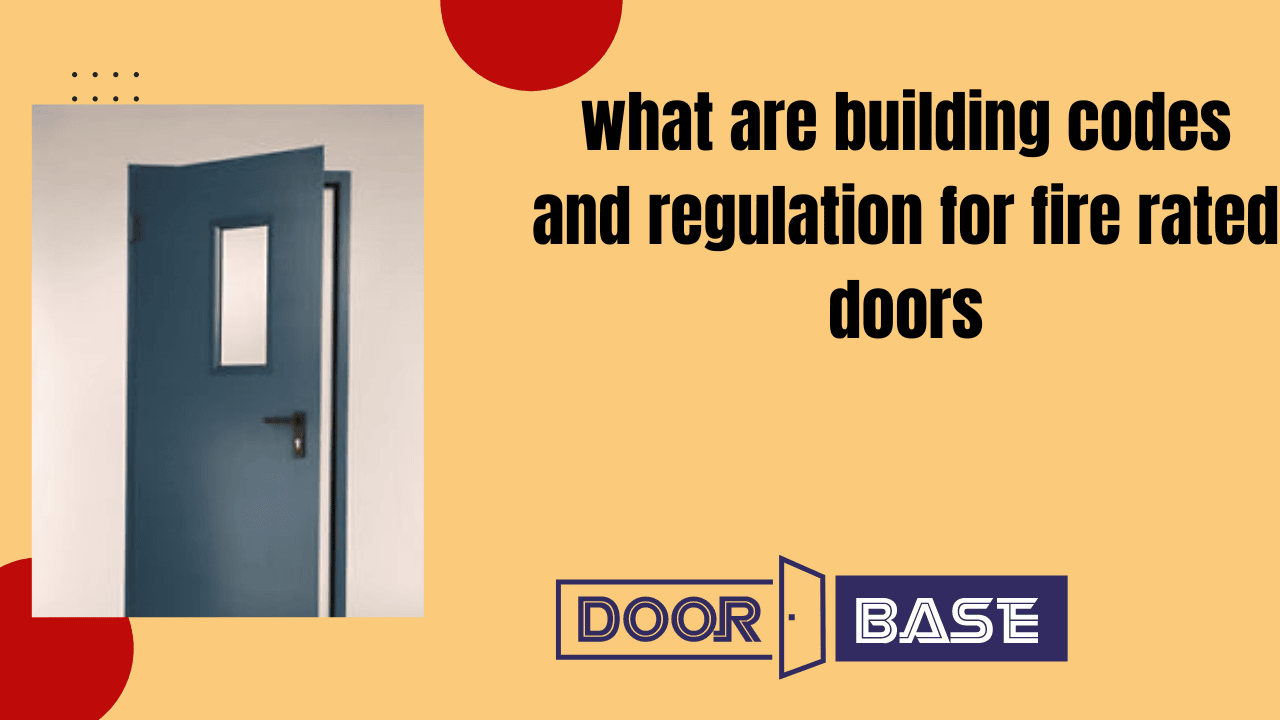
what are building codes and regulation for fire rated doors
BySubhash Kumar
Building codes and regulations pertaining to fire-rated doors play a critical role in ensuring the safety and protection of individuals within buildings during fire incidents. These codes and regulations establish specific standards and requirements for the design, construction, installation, and maintenance of fire-rated doors. Adhering to these codes is essential for achieving effective fire prevention, containment, and evacuation strategies.
Fire-rated doors are an integral component of fire protection systems in buildings. They are specially designed and constructed to withstand fire and limit the spread of smoke, flames, and heat. The following sections delve into the comprehensive building codes and regulations related to fire-rated doors.
- International Building Code (IBC):
- The IBC is a widely recognized model building code used in many countries. It contains specific provisions regarding fire-rated doors in different occupancy types, including residential, commercial, industrial, and institutional buildings. The IBC specifies requirements for fire resistance ratings, labeling, installation methods, and hardware components of fire-rated doors.
- National Fire Protection Association (NFPA) Codes:
- The NFPA develops and publishes numerous codes and standards related to fire safety. The most relevant codes include:
- NFPA 80: Standard for Fire Doors and Other Opening Protectives
- NFPA 101: Life Safety Code
- NFPA 105: Standard for Smoke Door Assemblies and Other Opening Protectives
- These codes address various aspects of fire-rated doors, such as fire resistance ratings, testing procedures, installation guidelines, inspection, and maintenance requirements.
- Local Building Codes:
- Local jurisdictions often adopt and enforce their own building codes that incorporate or reference national or international codes. These local codes may contain additional requirements or modifications specific to the region's building practices, climate conditions, and regulatory considerations. It is crucial to consult the local building department or authority to ensure compliance with the applicable codes and regulations.
- Fire Resistance Ratings:
- Building codes specify the required fire resistance rating for fire-rated doors based on factors such as occupancy type, fire compartmentation, and building height. Fire resistance ratings indicate the duration of time that a door assembly can withstand fire exposure while maintaining its integrity and limiting the spread of smoke and flames. Common fire resistance ratings for doors include 20 minutes, 45 minutes, 60 minutes, 90 minutes, and 180 minutes.
- Labeling and Certification:
- Fire-rated doors must undergo rigorous testing by accredited laboratories to validate their fire performance and compliance with applicable standards. Approved fire-rated doors bear labels or markings indicating their fire resistance rating, manufacturer's name, listing agency, and other relevant information. The labels provide assurance that the doors meet the required standards and have passed the necessary testing protocols.
- Installation and Hardware Requirements:
- Proper installation of fire-rated doors is crucial for their effectiveness. Building codes specify guidelines for the installation process, including the use of approved hardware, such as hinges, closers, latches, and locks. The hardware must meet specific fire-rated criteria to ensure compatibility and proper functioning. Additionally, codes outline clearances, gaps, and sealing requirements to prevent the passage of smoke and flames around the door assembly.
- Inspection and Maintenance:
- Regular inspection and maintenance of fire-rated doors are essential to ensure their continued functionality and compliance with codes. Building owners and facility managers are responsible for implementing inspection and maintenance programs that cover aspects such as door operation, hardware functionality, gaps and clearances, proper signage, and repair or replacement of damaged components. These activities help identify and address any issues that may compromise the performance of fire-rated doors.
- Special Considerations:
- Certain occupancies or building types may have specific
for more blogs click on https://www.doorbase.in
Subscribe for discounts and offers